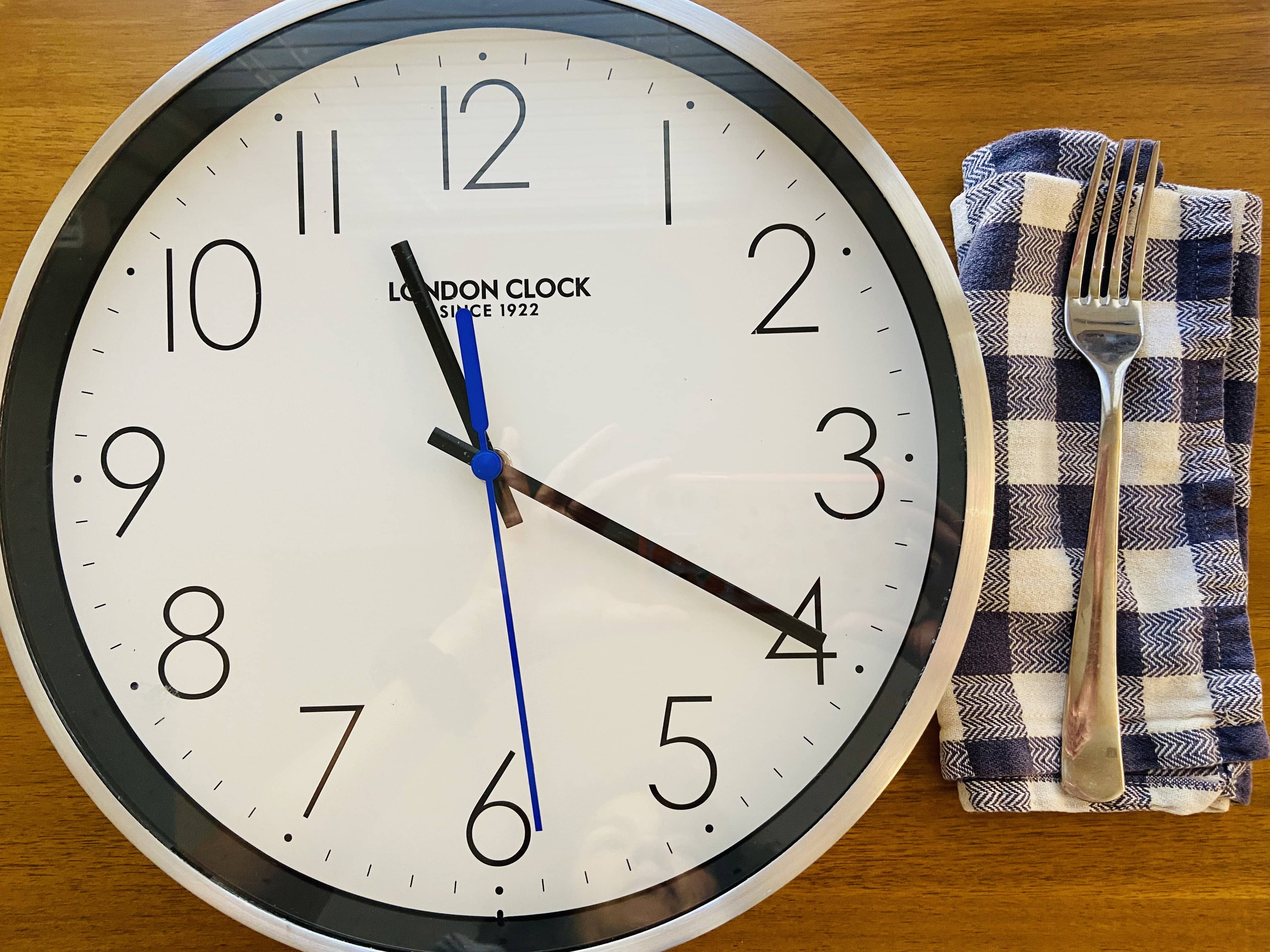Yes…. but!
You can lose weight with intermittent fasting (IF) just as you can lose weight doing any other type of fad diet. But the key to success is sustainability and intermittent fasting is likely not sustainable for the long-term. There are pros and cons to IF and I’ll share my thoughts, as well as provide tips on how to get the benefits of fasting without having to do a “true” fast.
What is Intermittent Fasting?
Intermittent fasting is voluntarily not eating or drinking for a period of time. There are many versions of fasting that can include fasts that last for hours or even days.
One popular version is “time restricted eating”. Time restricted eating is a method that involves confining the number of hours you eat, with a fast for all other hours. One of the easiest versions of this is the 12-hour fast; it gives you an eating window of 12hrs followed by a 12 hr fast. It’s easier than other type of fasts because you are not skipping any meals and are fasting mainly when you are asleep. One example would be to have breakfast after 7am, lunch at 12pm and dinner before 7pm.
Which brings me to 16/8 method. You fast for 16 hours and eat within an 8 hour window. An example would be to have breakfast at 8am, lunch at 12pm and a snack/early dinner before 4pm. This is then followed by a 16 hour fast. If you normally skip breakfast, you could start your eating window with lunch, after 12 pm and dinner before 8pm, followed by a 16 hour fast.
Does it work?
Yes, you can lose weight with intermittent fasting. It has also been found to help reduce blood sugar and cholesterol levels, decrease blood pressure and reduce inflammation. I think it works for people who are tired of calorie counting and good at skipping meals. However, it is no magic bullet and simply uses time to control how much you eat.
It’s similar to many fad diets in that the weight stays off as long as you can stay on the fast. Moreover, studies have found that people on fasts had a higher drop out rate than people on reduced calorie diets. After all, let’s not forget the fact that it’s hard not to eat anything at all!
It’s also important to point out that the health benefits are not unique to fasting but to weight loss in general.
Intermittent fasting is difficult to maintain long-term.
Social eating is a pastime and ingrained in our culture and society. IF may be difficult to stick with because you may miss out on sharing meals with family and friends due to your fasting periods. Moreover, the pressure to join a meal while you are fasting, even with the intention of just having water, may lead to temptation and breaking your fast.
Also, families that eat together have been found to be happier and healthier. Many studies have found that kids who regularly eat dinner with their families also eat more fruits and veggies, have lower rates of obesity, have more self-esteem, lower rates of school behavioral problems, better body image and better grades.
In addition, parents are role models for their children. Kids are always watching and hearing what you are doing, and if they see you skipping meals or follow any other fad diet, it may set the stage for disordered eating patterns in your children.
My Suggestions
When weight loss and better health is your goal, make small changes that are sustainable long-term. The less the changes interfere with your everyday life, the more you enjoy the journey and the more likely you will maintain the healthy habits long-term.
Some studies have found that the timing of meals plays a role. People who ate more of their calories in the morning rather than the evening lost more weight even though the total calories eaten were the same. So, although I’m not a big fan of fasting, or other fad diets for that matter, there are four aspects of fasting that I think can be helpful and healthful to adapt. These are:
1. Eat dinner as early as possible
2. Make dinner your smallest meal
3. Do not snack (especially after dinner)
4. It’s ok if you miss a meal now and then

